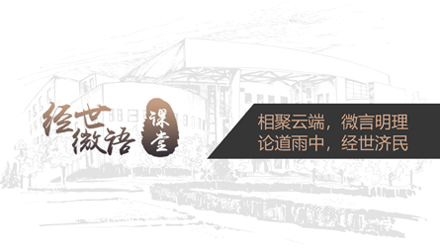
当前课程知识点:History of Chinese Architecture Part I > 2 Architecture from Prehistory to the Han dynasty > Section 2 > Civilization and cities of the Qin and Han dynasty
返回《History of Chinese Architecture Part I》慕课在线视频课程列表
返回《History of Chinese Architecture Part I》慕课在线视频列表
好 我们下面讲另外一个很重要的部分
就是秦汉时期的中国建筑 从公元前221年到公元220年
这个时期是相当于罗马帝国的时代
也就是说 在世界的(范围内)
欧洲形成了一个庞大的帝国——罗马帝国
影响了这个区域的发展
而在东方 就是秦汉帝国
它所产生的巨大的影响 也影响了周边地区的发展
在秦汉时期 我们还是先讲城市
讲到秦汉的城市 可能有一个城市就必须要讲
就是秦的咸阳
秦的咸阳的规划的方式
已经完全不同于周代或者春秋战国时期的城市
它有很多自己独特的想法
比如说“法天象地”
它模仿的对象已经不再是原来的等级制度
或者是管子的那种因地制宜 考虑环境
它已经不是这样了
它要放到一个更宏观的 更大的 更宏大的一种场景当中
去规划和想象它的城市 就是天和地
汉代的城市在秦代的基础上又有了自己的发展
所谓“汉家自有制度” 它有自己的一套东西
可以说集春秋以来城市发展的很多经验 汲取了
然后又表现了原来从来没有过的
这样的统一的大帝国的宏大志向
在城市当中都体现出来
当然 宫殿仍然是这个时期城市的一个核心的内容
还有市场 我们刚才讲了
汉帝国和周边地区
特别是和中亚 西亚地区的这种频繁的贸易往来
导致它的商业活动极其繁荣
市场在城市当中也占有越来越重要的位置
咸阳 我们刚刚有提到
咸阳的战略位置很重要
有文献说它“据山河之固,东向以制诸侯”
它向东可以制约战国时期的七雄五霸
(是)诸侯国之间的战略要地
后头又占据了关中平原这样一个良好的资源环境
特别是通过蜀道
和后面的四川 成都平原联系在一起
“关中为沃野,无凶年,秦以富强”
这是司马迁讲的
因为这样的一种条件 秦占据了这个城市
它变得强大 最后把这个国家统一了
当时 无论是秦朝的官员 还是秦始皇本人
实际上对于他自己建立了这样一个统一伟业
都有极高的一个评价
他(们)不知道用什么样的形式
用一种什么样的方式能够表现这种伟业
名字上要用皇帝的方式(称始皇帝)
然后建筑上怎么办 城市上怎么办
因为我们发现在文献当中 在考古学的发现当中
这个秦朝的宫殿极其分散 找不到规律
在咸阳周边地区到处都有它宫殿的遗址发现
而且相互之间 可能拉得距离很大
为什么会造成这种原因
它有没有一种规划的思想
我们反过来按照文献来查 然后来反推
我们会发现一个有趣的现象
这有趣的现象就是我们说的所谓“法天象地”
秦朝的宫殿 如果把它和咸阳冬至日的星空来对照的话
我们会发现他们之间有某种联系
在咸阳这个地方 冬至日那天晚上
当你遥望星空 然后你把星座图画下来的话
你会发现秦朝的宫殿是根据这样的一个关系来布局的
它很多重要的宫殿都和当时那个时间的星座的位置是相关的
这样的情况在对于金字塔的研究上也曾经提到过
这恐怕也是古代世界人们认识
无论是自然界 无论是他们的内心
把这两者结合在一起一个很重要的途径
在秦朝的宫殿的处理上我们发现
轴线变成了一个很重要的规划的因素
而这个轴线不是我们今天说的简单的几十米
甚至上百米 上千米规模的轴线
而是多少公里的轴线
我们发现比如说从秦咸阳宫的遗址一直连到我们的东海之滨
到锦屏山 它都有一种轴线的关系在里面
这种宏大的气象
在中国的封建王朝当中其实也是极其罕见的
另外一个很重要的城市就是西汉的长安
汉的长安是公元前200年开始兴建的 最早是兴建未央宫
其实它也是利用了秦朝的一些宫室开始建造的
到公元前189年左右 整个长安的城墙才完成
整个城市基本上有了一个形象
长安其实只是用了原来秦咸阳大区域的一个小部分 一块儿
咸阳的范围很大
长安基本上是一个相对集中的一个宫城区
你会发现这个城市当中充满了宫殿
各个区域当中大部分被宫殿占据
而其它功能的部分很少
所以汉长安城基本上更像一个宫城
长安其实跟咸阳很接近 它的地理位置很重要
周边有华山 终南山 太白山等等 北山山脉
构成了一个很好的防御的体系
周边有函谷关 武关 散关 萧关等等
它是一个军事防御的重镇
对于汉代来说 选择在这个地方建城是有它的道理的
汉长安根据考古的调查
它的实测尺寸大概是35.8平方公里这个规模还是很大
其中宫殿区和官署区占到城市的2/3的位置
即2/3的量都是宫殿和衙署
长安在规划上继承了咸阳大区的概念
所谓京畿大区的这种概念
它没有外郭 没有外城
它的城墙结合地形 是不规则的
宫殿占了大部分城市用地
宫室分散在城市的各个区域当中
而且 汉长安有一个很特别的地方
就是它随着汉代的发展
在周边发展了很多卫星城 叫做陵邑
就是一个皇帝的陵葬在那儿了
然后就迁很多人到那个陵那儿去 形成了一个卫星城
像长安这样的城市规划的体系
无论在早期的城市发展当中
还是在后期的城市发展当中 都是不多见的
关于建筑 在城市当中 汉代有固定的市场
我们刚才讲到汉代的商业发展很繁荣
特别是跟中亚 西亚 跟西面的这种交流非常多
大量的外头的物资开始进入到长安当中交易
所以长安的市场非常多
我们从一些画像砖当中 看到有当时市场的形象
中间建一个市楼 然后两边是商铺 就是四周是商铺
这种所谓市的格局
一直在中国后来的城市当中被沿用
-1 An outline of Chinese Architecture
--Characteristics of Chinese Architecture
--The historical division of Chinese Architecture
--A discussion of the typologies in Chinese Architecture
-2 An outline of Ideas about ancient architecture
--Ancient city planning thoughts and two opposing arguments
--Principles of ancient architecture
--Ideas about ancient architecture
--Ideas about ancient architecture
-Homework
-Section 1
--Early civilization and architectural morphology
--Architecture in the Xia and Shang dynasty
--Architecture in the Xia and Shang dynasty
--Architecture in the Zhou dynasty
-Section 2
--Civilization and cities of the Qin and Han dynasty
--Palaces of the Qin and Han dynasty
--Residential architecture, tombs and other types of architecture
-Homework
-Section 1
--Cities and palaces of the Three Kingdoms, the Jin dynasty and the Southern and Northern Dynasties’ p
--Cities and palaces of the Three Kingdoms, the Jin dynasty and the Southern and Northern Dynasties’ p
--Cities and palaces of the Three Kingdoms, the Jin dynasty and the Southern and Northern Dynasties’ p
--Development of Buddhism and the prosperity of Buddhist architecture
--Buddhist architectural remains in the Southern and Northern Dynasties’ period
-Section 2
--Grottos in the Southern and Northern Dynasties’ period
--Development of wood structures as seen from grottos in the Southern and Northern Dynasties’ period
--Gardens from the Qin and Han dynasty to the Southern and Northern Dynasties’ period
-Homework
-Section 1
--Chinese culture of the Sui and Tang dynasty
--Two capitals of the Sui and Tang dynasty: Chang’an and Luoyang
--Two capitals of the Sui and Tang dynasty: Chang’an and Luoyang
-Section 2
--Li-fang and residential architecture in Chang’an and Luoyang
--Important buildings in the Sui and Tang dynasty palaces
--Gardens of the Sui and Tang dynasty
-Homework
-Section 1
--Religious architecture in the Sui and Tang dynasty
--Wood Buddhist Halls in the Sui and Tang dynasty
--Brick and masonry towers in the Sui and Tang dynasty
-Section 2
--Architectural style and design method in the Sui and Tang dynasty
--Wood frame technology in the Sui and Tang dynasty
--Brick and masonry technology in the Sui and Tang dynasty
--Progression of architectural technology and development of art
-Honework
-Section 1
--History of the Five Dynasties’ period and the Song, Liao and Jin dynasty
--Bianliang of Northern Song and Lin’an of Southern Song
--Pingjiang Prefectural City, Southern Capital of Liao and Central Capital of Jin
-Section 2
--Palaces in Bianliang of Northern Song and Lin'an of Southern Song
--Palaces in the Central Capital in the Jin dynasty
--Gardens of the Song, Liao and Jin dynasty1
--Gardens of the Song, Liao and Jin dynasty 2
-Homework
-Section 1
-Section 2
--Double-eave single-storey wood hall
--Multi-story wood structure s in the Song, Liao and Jin dynasty
-Homework
-Section 1
--Brick and masonry pagodas in the Song, Liao and Jin dynasty
--Brick and masonry pagodas in the Song, Liao and Jin dynasty
--Brick and masonry pagodas in the Liao and Jin dynasty
--Brick and masonry pagodas in the Song dynasty
--Brick and masonry pagodas in the Song dynasty
-Section 2
--A summary of the Yingzao-Fashi
--video
--video
--video
--video
--video
-Homework





